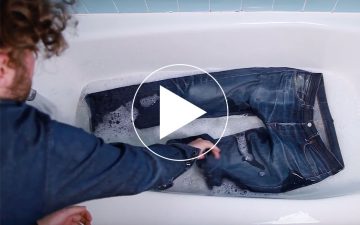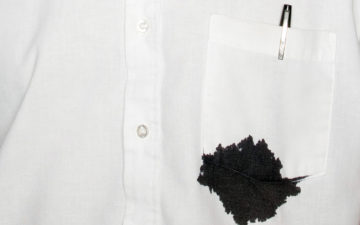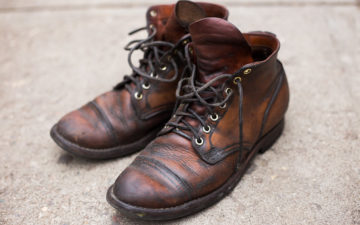Many people have asked how my jeans have lasted so long. The following was one of my secrets.
It’s an issue we all encounter during our denim journey; the mere sight of it makes even the most grown man and woman quiver in fear. You probably know what I’m alluding to: the blowout. Luckily, you can save and extend the life of your jeans by using this simple guide to denim repairs.
You should be on your way to fixing your own jeans after this article. The hardest part is learning how to thread your sewing machine. After that, practice on any scraps available before putting your skills to the test on your jeans.
Before proceeding, its important to familiarize yourself with the basics of warp, weft, and twill.
While we’re all aware of the alternatives to fixing your own jeans – darning, sew-on patch, the iron-on patch, fabric mending glue, buying new jeans, and so on – its best summed up in a quote we’ve all heard growing up:
Give a man a fish and you feed him for a day. Teach a man to fish and you feed him for a lifetime. – Chinese Proverb
So don’t buy a fish, learn to do it yourself. It’s saved me plenty of time and money just by learning how to fix my own jeans.

Wall-mount that 21 oz.’er!
One of the biggest complaints about raw denim is that the crotch rips too quickly. Consider this analogy, if your car tire has a hole in it, you can continue driving it for a while before you have to replace it. Fixing it right away will save your car.
This analogy has some holes faults in it, but overall the tear in your denim is like the tire’s hole. You can last with the tear, but it will eventually get worse and put your jeans out of commission. Fix the hole before it becomes a major problem and you’ll save yourself a lot of worrying.
On one hand, the crotch should last a decent amount of time since you’ve invested X-amount of dollars into your jeans. On the other hand, the crotch is the highest stress point and wearing it 7 days a week for an entire year is going to wear it out sooner. More importantly –
There is at least a 4 week period, usually longer but very variable, when a hole first appears before it fully matures into a rip.
From what I’ve learned and observed, the warp yarns tear before the weft yarns do. I may be extrapolating a bit, but the weft yarns are more durable than the warp yarns because warp yarns are more stressed by the friction of the up & down motion of our legs and life than the less common side-to-side movement.
In other words, warp yarns break because they’re more active than the weft yarn.
Before we go any further, I’ve classified the life of a hole into 3 stages:
- Stage 1: When the warp threads start to fray or a few warp yarns have ripped.
- Stage 2: Warp threads have completely ripped in one area and the weft threads are starting to fray or a few weft threads have ripped.
- Stage 3: Both warp and weft threads have ripped.
The simple solution to prolong your jean’s life is this – Fix the fraying fabric before they become holes and rips.
Just to clarify, the main source of my sewing skills and knowledge come from Home Economics (AKA Foods and Fashion) in Grade 8 and 9 where we learned basic home skills of cooking and sewing.
If you add a working knowledge of warp and weft yarns, congrats, you know as much as I do. Practice mending some holes and you’ll be an expert.
For what is worth, the sewing machine I’m using is about 28 years old. There’s nothing particularly fancy about it. All the machine needs to do is sew forwards and backwards. If you’re curious, the brand is Montgomery Ward (which has an interesting history).
I’m using my Naked and Famous x Blue in Green jeans as the test subject. It’s the beginning of the 22nd month and my jeans need a bit of help getting across the 2 year mark. Here I am practicing what I preach – so fix your jeans or let them die.
The Procedure
- Periodically check your jeans for any holes (especially the crotch). Pre-screen for any holes.
- Set up your sewing machine.
- Clear away any frayed warp yarns.
- Straighten fabric around the hole to ensure the fabric is smooth and wrinkle-free.
- Sew zigzag patterns to recreate the broken warp yarns.
- Continue the zigzag patterns back and forth until you reach desired hole coverage.
- Enjoy your denim until more holes form.
The Diagram
Below is a hole. Notice the broken warp yarns – they’re the first ones to go. If you let it go long enough, the weft yarns will break away and create a hole. Simply put, the goal is to recreate the warp yarns.
I do this by making zigzag patterns with my sewing machine over the length of the hole. Go from the top to the bottom of the hole from side to side until you reach your desired amount of coverage.
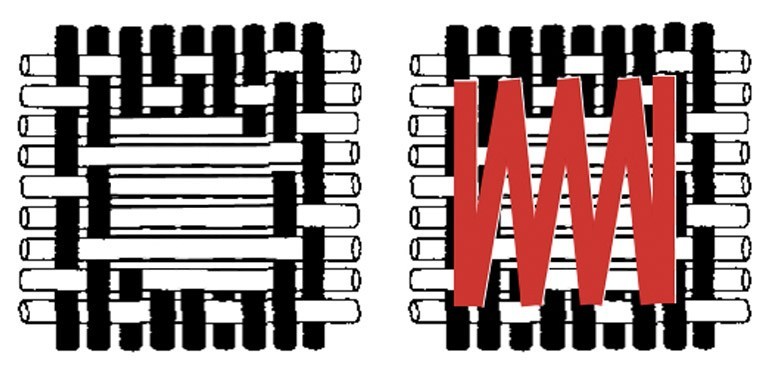
Left: offending hole; right: zigzag from top to the bottom of the hole until you reach the other end.
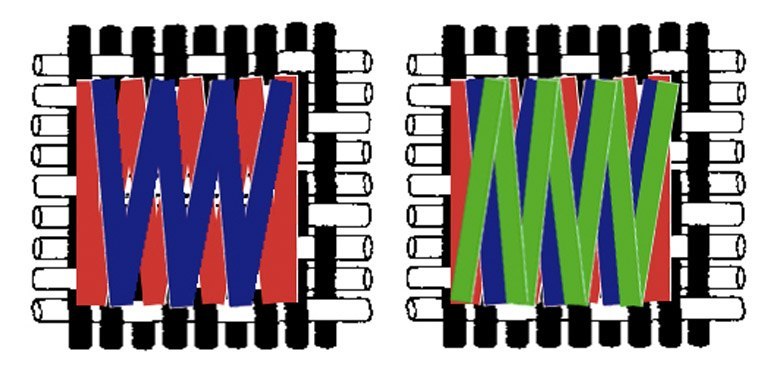
Left: zigzag in the reverse direction to the other side; Right: Keep going until you cover the hole. Repeat this process until you reach your desired coverage.
Note: Don’t overdo it or else the fixed area will be incredibly stiff and unsightly.
The Process
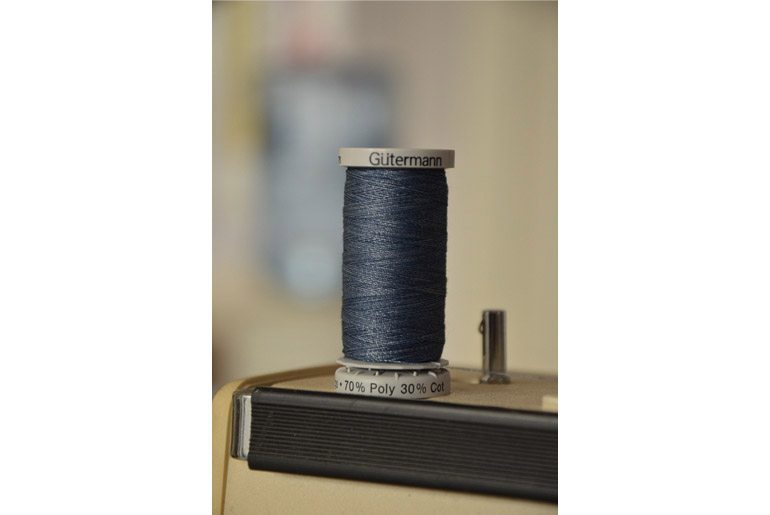
Gutermann “jeans” coloured thread. 70% Poly and 30% Cotton.
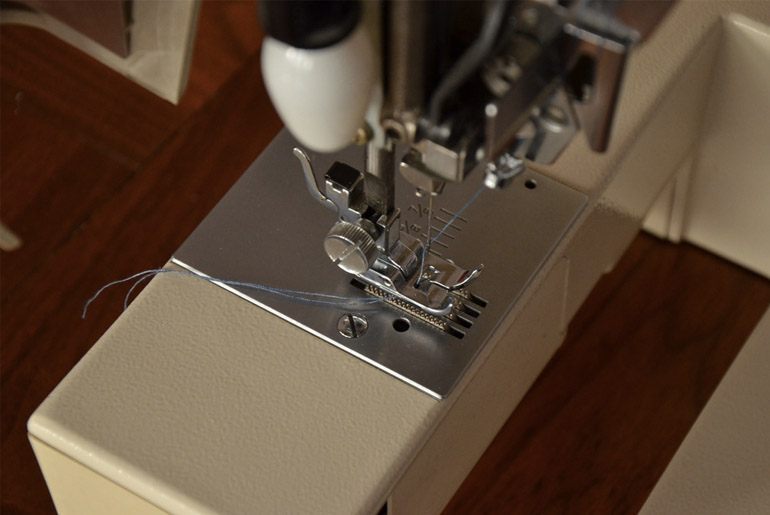
Get past this part and that’s half the battle!
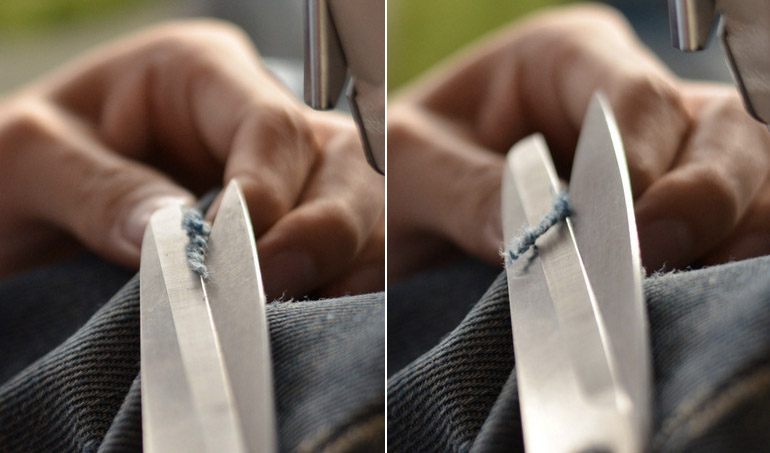
Remember to cut off any excess or frayed warp yarns to make a cleaner repair.
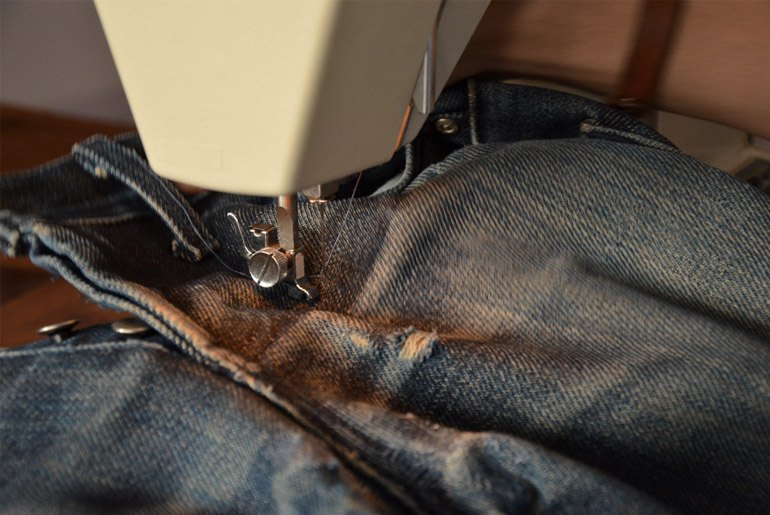
I have to remove the pressor foot every time because the jeans are too thick at the wasit band to fit in.
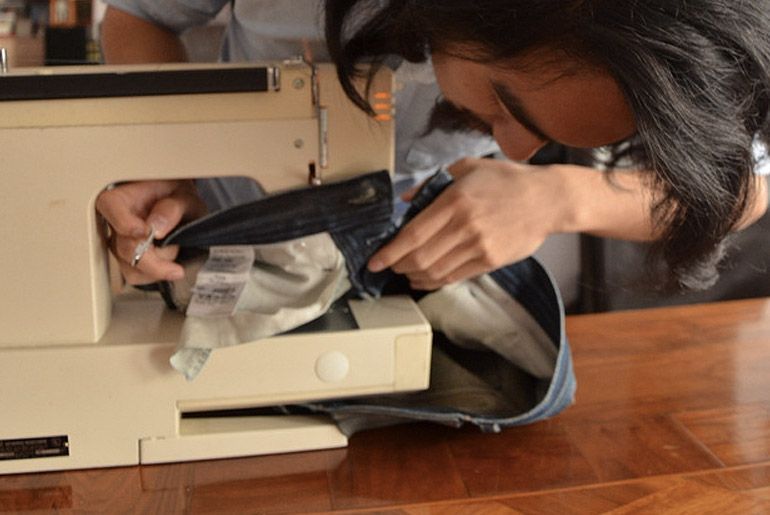
Double-check that your pocket bags aren’t in danger of being sewn together with your denim!
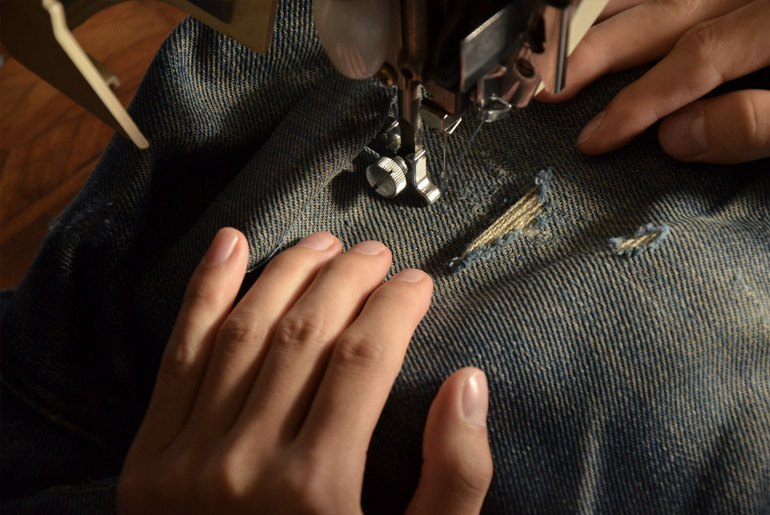
Straighten the hole and weft yarns before sewing. You can imagine what happens if you sew it together improperly.
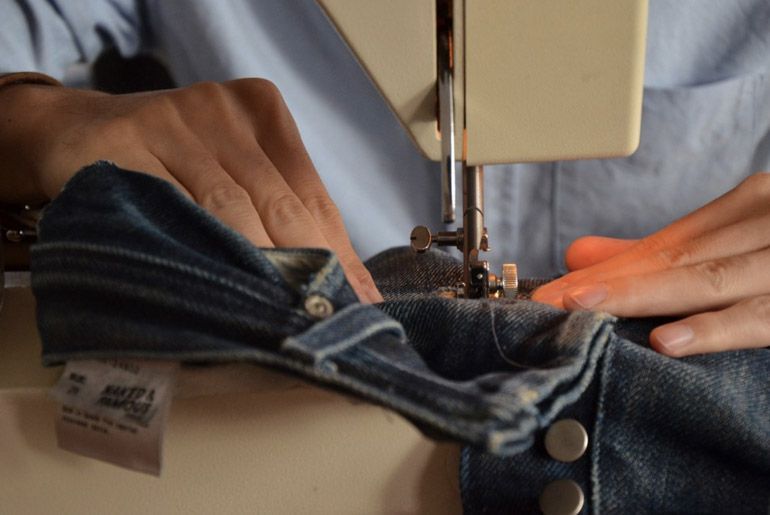
Feed the jeans and guide it through evenly!
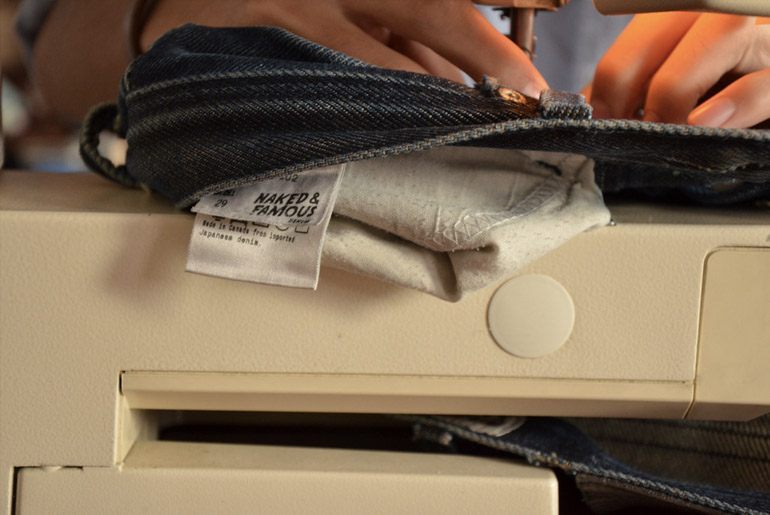
It looks like the pocket is being squished and spilling out. It is not.
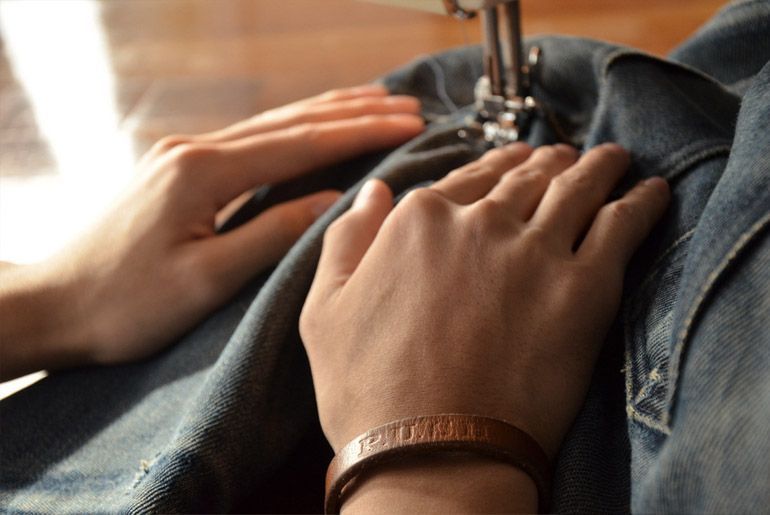
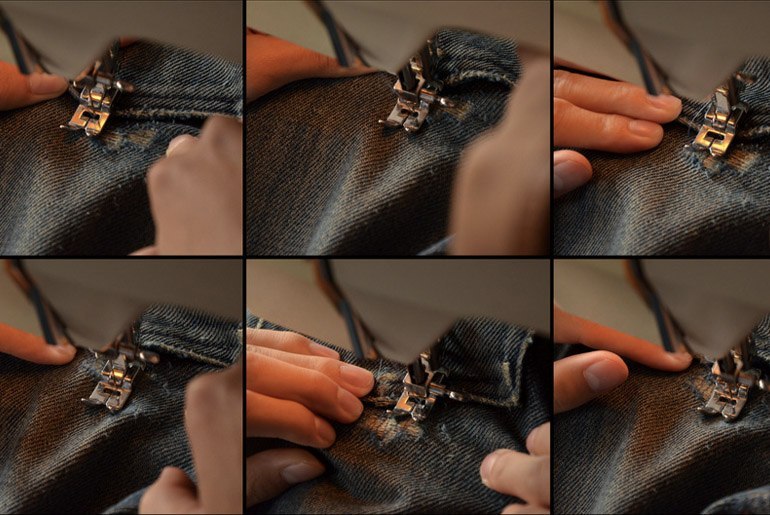
Fixing the hole underneath the back left pocket. It’s always a bit tricky when going over multiple layers of denim. Be careful not to sew the back pockets to the rest of the denim. Notice the zigzag procedure in action.
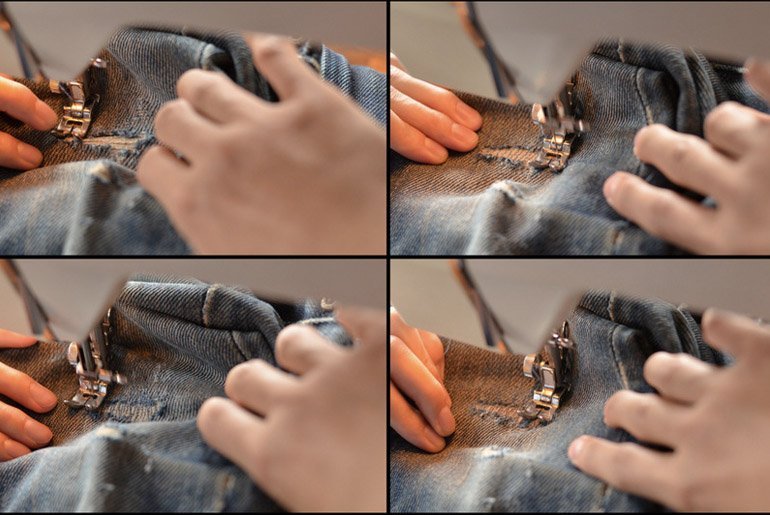
Fixing the hole at the front left knee. Sew up and down the hole to recreate the missing warp yarns. I did 5 laps (or 10 lengths) across the hole.
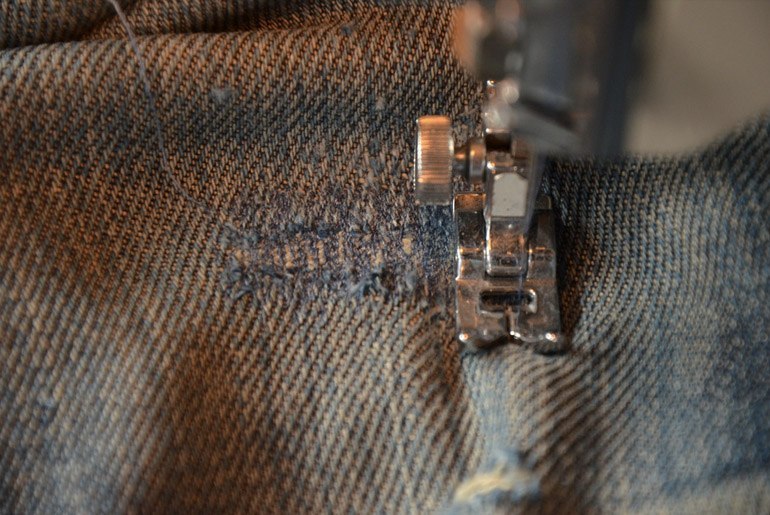
Close-up of big left knee hole after some sewing magic.
Before And After – Exterior
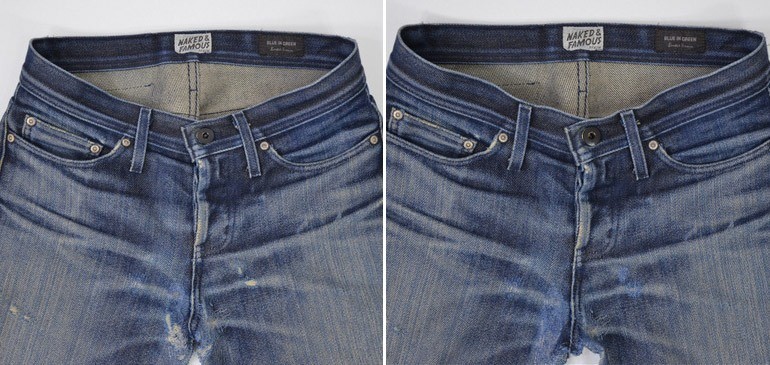
Front top of the jeans. The hole is located to the bottom right of the left pocket.
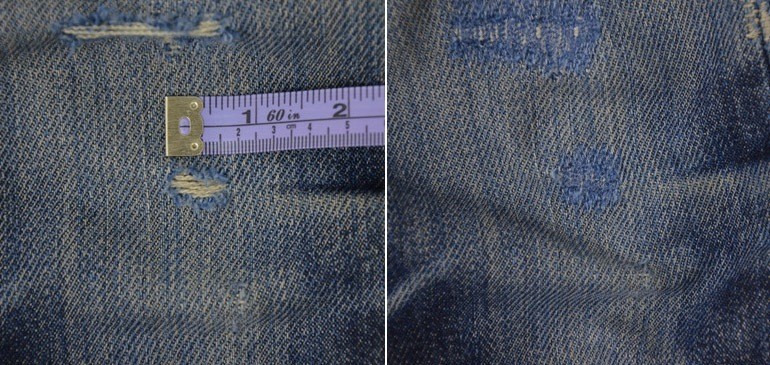
The hole is ~1.5 cm (0.59 inches). These ones are quick and easy to fix.
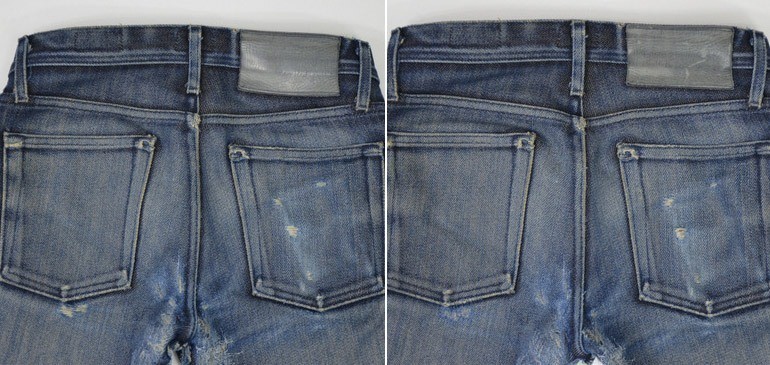
The hole in question is under the left back pocket.
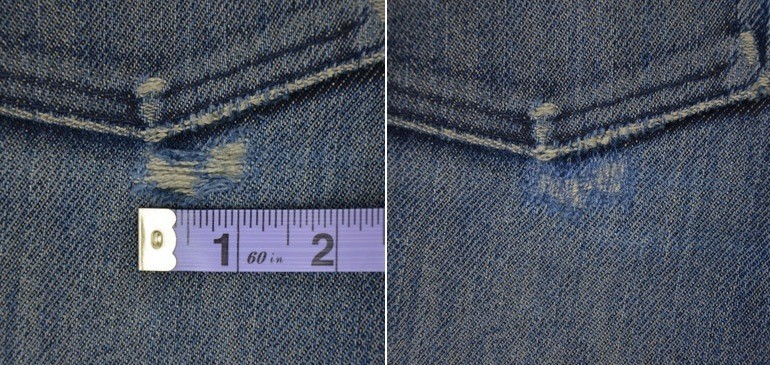
This hole was a bit trickier to maneuver because of the back pocket. Thankfully, I didn’t sew over it.
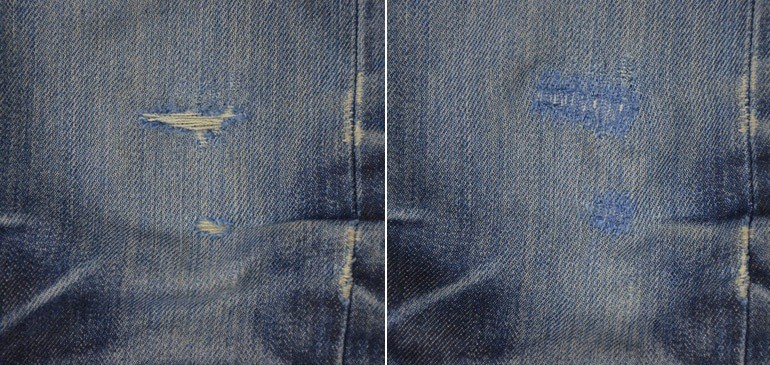
The left knee got two troublesome holes. The toughest part was fitting all the denim through the machine to reach the hole. That 21 oz. denim is thick…
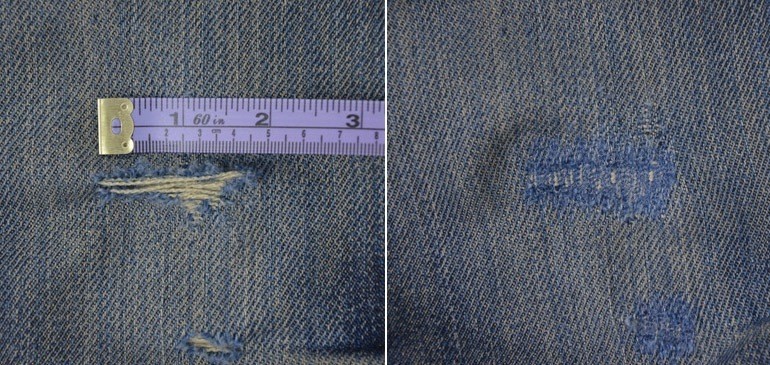
Don’t let your holes get this big. I should have fixed it 2 weeks before this period, but I let it grow for the sake of this article. Hole size: 4.5 cm (1.77 inches).
Before and After – Interior
Looking at your jeans from the inside-out is a good way to determine where holes are forming. The fuzzy blue parts are warp yarns that are starting to fray. Nothing to get alarmed about – it’s just a sign of your jeans wearing down.
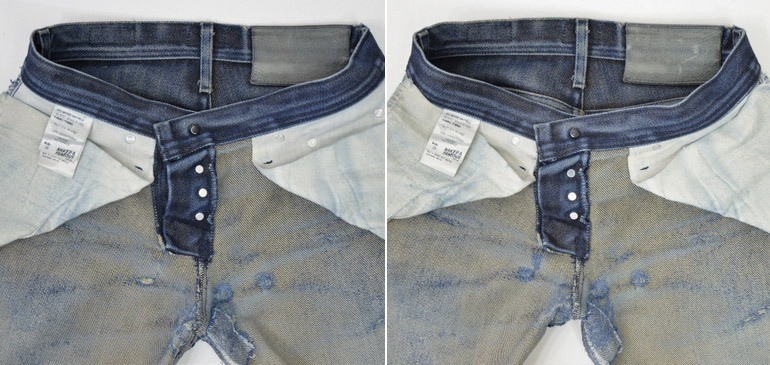
Front of the jeans from the inside-out. Notice the pocket bag on picture’s right and how it’s helping to create a hole.
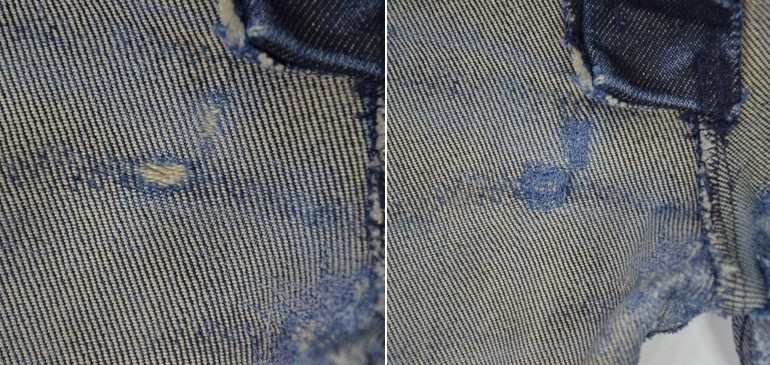
I decided to do minor crotch repairs (not pictured) since I was repairing my jeans. Crotch repairs were done with the same procedure as described.
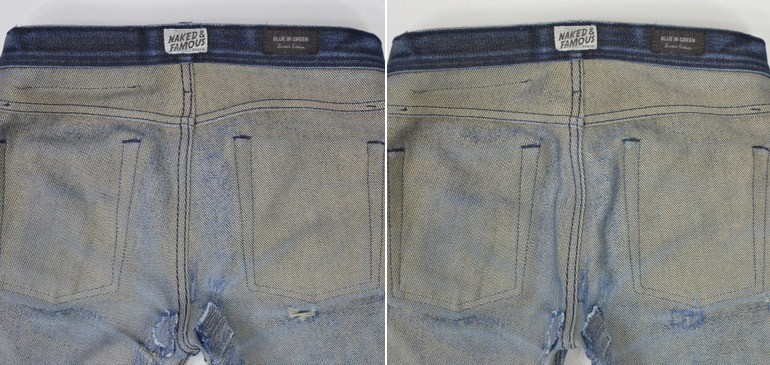
Fixed the hole underneath the left pocket.
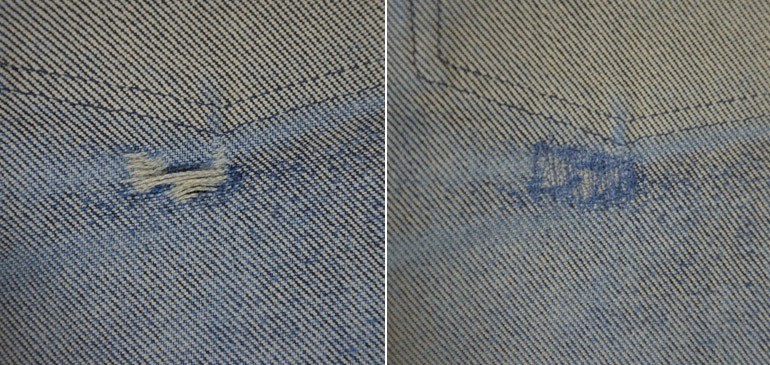
Probably should have gone over this one a few more times with the sewing machine.
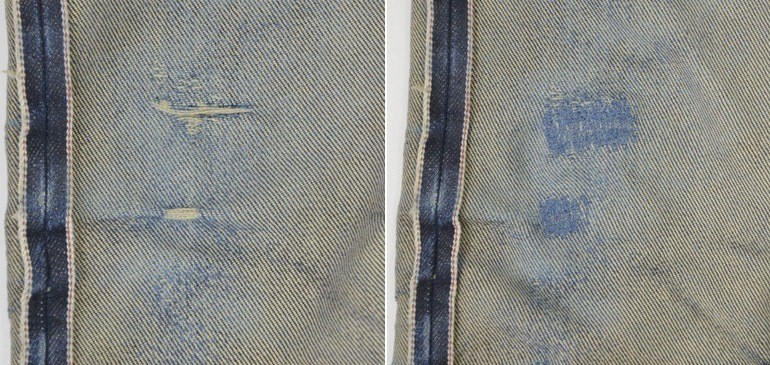
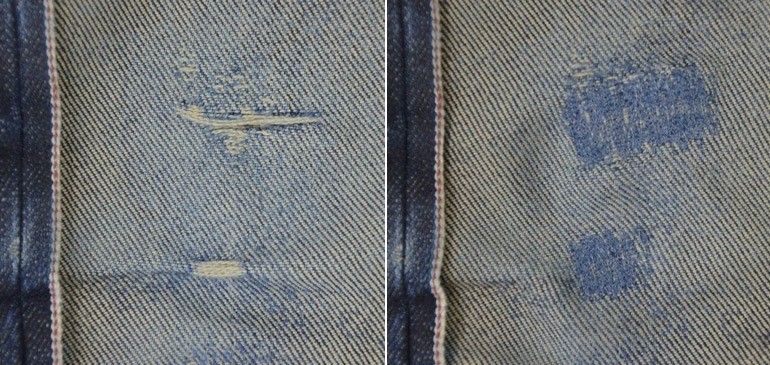
Conclusion
And what article would be complete without a pros and con list? Don’t be scared off by the cons; the pros outweigh them by a long shot.
Pros
- Prolongs the life of your jeans.
- Saves time and money.
- No holes, no problems.
Cons
- You’re responsible for any mistakes.
- Minor time investment to learn how to sew.
- Your jeans won’t drape as nicely if you over-sew the hole.
Let us know if you have any other tips, suggestions, or improvements to this or your DIY denim fixes.
